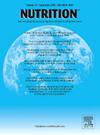非洲医院成人疾病相关营养不良的流行、影响和管理:来自资源有限的临床环境的叙述审查和见解
IF 3.2
3区 医学
Q2 NUTRITION & DIETETICS
引用次数: 0
摘要
与疾病相关的营养不良(DRM)是一个被视为全球政策重点的世界性问题,但在非洲发生的规模被夸大了。虽然由于营养评估技术的多样性,对研究结果的解释很困难,但据报道,非洲急性护理住院患者的DRM通常在45-75%之间,营养风险达到84%。在资源有限且缺乏营养师的临床环境中,DRM综合管理面临的挑战包括:首先,缺乏常规营养筛查导致90%以上的营养不良或高危患者未能获得营养支持转诊,或转诊时间过晚。其结果是住院期间营养状况恶化,临床并发症增加2至6倍,住院时间增加一倍,死亡率显著增加。其次,医院结构通常不支持有价值的营养护理,原因是营养口服饮食非常差或缺乏提供,缺乏多学科的洞察力和合作,以及不存在正式的营养支持协议和标准。第三,医疗营养治疗(MNT)产品和喂养泵严重缺乏,迫使营养师临时制定不理想的肠内和肠外喂养配方。在提供妇幼保健服务的地方,这种服务价格昂贵,而且往往得不到报销,这就把获得妇幼保健服务的责任推给了患者家属,费用由他们自己承担。需要紧急改进营养方案,使之适应资源有限的情况,同时作出政治承诺,促进提供适合医院使用的妇幼保健产品和设备。本文章由计算机程序翻译,如有差异,请以英文原文为准。
Prevalence, impact, and management of adult disease-related malnutrition in African hospitals: a narrative review and insight from resource-limited clinical settings
Disease-related malnutrition (DRM) is a worldwide problem regarded as a global policy priority, but occurs on an exaggerated scale in Africa. While interpretation of studies is difficult due to the variety of nutrition assessment techniques, DRM in acute care in-patient African settings is commonly reported in the range of 45–75%, with nutritional risk reaching 84%. Challenges to the comprehensive management of DRM in the resource-limited clinical settings with few dietitians reviewed in this paper include the following: first, lack of routine nutrition screening resulting in more than 90% of malnourished or at-risk patients failing to receive nutrition support referrals, or receiving very delayed referrals. The result is worsening of nutritional status during hospital stay, clinical complications two to six times higher, up to a doubling of length of stay, and significantly higher mortality. Second, hospital structures are generally unsupportive of worthwhile nutritional care due to very poor or absent provision of nutritious oral diets, lack of multidisciplinary insight and collaboration, and the nonexistence of formalized nutrition support protocols and standards. Third, there is a grave lack of medical nutrition therapy (MNT) products and feeding pumps, forcing dietitians to improvise suboptimal formulations for enteral and parenteral feeding. Where MNT is available it is expensive and often not reimbursed, placing the responsibility for acquisition onto patients’ families at their own expense. Urgent improvements in nutrition protocols adapted for resource-constrained contexts are needed, along with political commitment to facilitate the supply of suitable MNT products and equipment for use in hospitals.
求助全文
通过发布文献求助,成功后即可免费获取论文全文。
去求助
来源期刊

Nutrition
医学-营养学
CiteScore
7.80
自引率
2.30%
发文量
300
审稿时长
60 days
期刊介绍:
Nutrition has an open access mirror journal Nutrition: X, sharing the same aims and scope, editorial team, submission system and rigorous peer review.
Founded by Michael M. Meguid in the early 1980''s, Nutrition presents advances in nutrition research and science, informs its readers on new and advancing technologies and data in clinical nutrition practice, encourages the application of outcomes research and meta-analyses to problems in patient-related nutrition; and seeks to help clarify and set the research, policy and practice agenda for nutrition science to enhance human well-being in the years ahead.
 求助内容:
求助内容: 应助结果提醒方式:
应助结果提醒方式:


